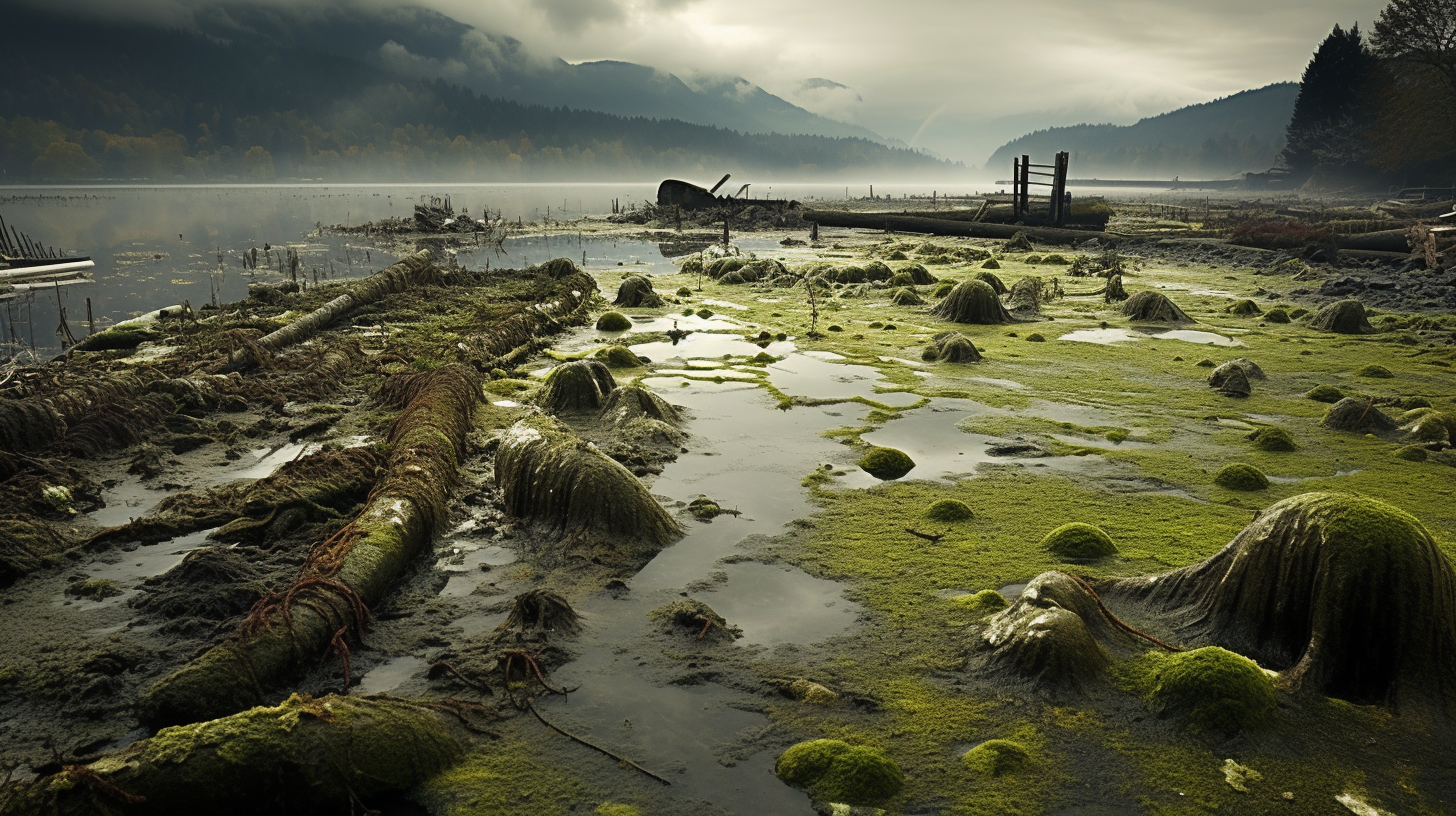In an eerily breathless silence, the shorelines of once-cerulean seas now bear the hallmarks of an environmental apocalypse. A viridescent blanket, thick and sprawling, smothers the coastlines, creeping up on the land like an unwelcomed dusk. ‘The Age of Algae Desolation Blooms’, a phrase coined not out of scientific curiosity but from a lamenting recognition of our new reality, encapsulates a world where the once life-giving force of aquatic flora now signals the dearth of marine biodiversity.
The phenomenon known as harmful algal bloom (HAB) has, in recent times, turned from a sporadic concern of marine biologists to a harrowing indicator of environmental degradation. Fed by an oversupply of nutrients from agricultural runoff and a warming climate, these blooms have become as frequent as they are catastrophic. Bodies of water, large and small, have been suffocated under a smothering green death, causing anoxic events that strip the ocean of life.
Dead zones, once localized and seasonal anomalies, have proliferated with a stubborn permanence. The waters near major delta regions, where river meets sea, now host perennial underwater deserts, void of the stirrings of fish and the whisper of underwater grasses. Here, in what was once a vibrant ecosystem, only the silent drift of jellyfish can be observed—a macabre ballet in a sea of poison.
Scientists, while documenting the unwavering expansion of these algal wastelands, offer no respite or solutions within our grasp. We are tasked with chronicling the obituary of the oceans, not as historians, but as contemporaries to the carnage. In our previous exploration, ‘Seas of Garbage – Oceans’ Plight Intensifies’, we detailed the inundation of our oceans with plastic waste. It’s now clear that this was merely one act in a tragedy unfolding in chapters of escalating desolation.
The marine casualties of this envirocide are countless; yet, one of the most iconic, the coral reefs, once vibrant underwater tapestries, now lie bleached and brittle. They crumble beneath the gentlest touch, succumbing not only to the thermal stress of rising sea temperatures but also to the assault of algae that suffocate and starve them in a grim embrace.
The economic ripple effect is severe. Coastal communities that once thrived on the bounty of the sea find their way of life eroded. Fisheries collapse, and with them, the livelihoods they supported. Tourism industries, banking on the allure of pristine beaches and coral-studded underwater wonderlands, now confront deserted sands and murky waters. Yet among these human tales of loss and adaptation, something more profound is at play.
We stand as unwilling witnesses to an irreversible change in the very chemistry of our planet’s life support system. The dystopia we paint with our words may not spur the hope for redemption; it is a canvas for reflection on what has passed and what will be. The tale of algae, once a trivial player in the grand narrative of nature, has turned darkly allegorical in our era of reckoning.
As we look to the future, to the bloom of yet another algal expanse, the question is no longer about the reversal of putrid tides. It has morphed into inquiries of endurance and existence within the confines of a world that no longer resembles the nurturing cradle it once was. How will humanity adapt? What futures can we forge from the floating carcasses of fish and the muffled songs of once-abundant whales?
The answers to these questions are as murky as the algae-ridden waters they stem from. Yet, it is within these musings that our spirit for storytelling thrives—not to offer a beacon of light, but to ignite a conflagration of consciousness that may yet bear embers of change. We watch, we write, and we wonder at the human condition set against the encroaching algal gloom.
